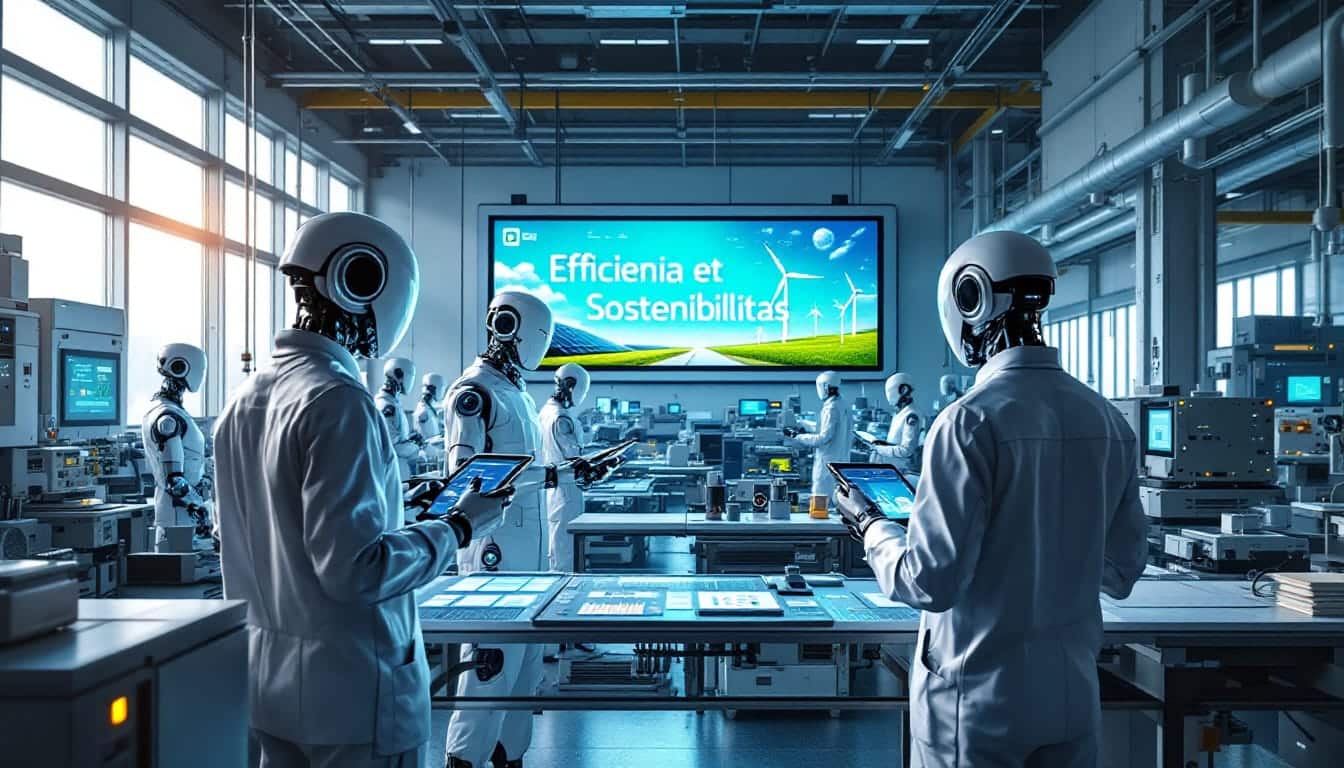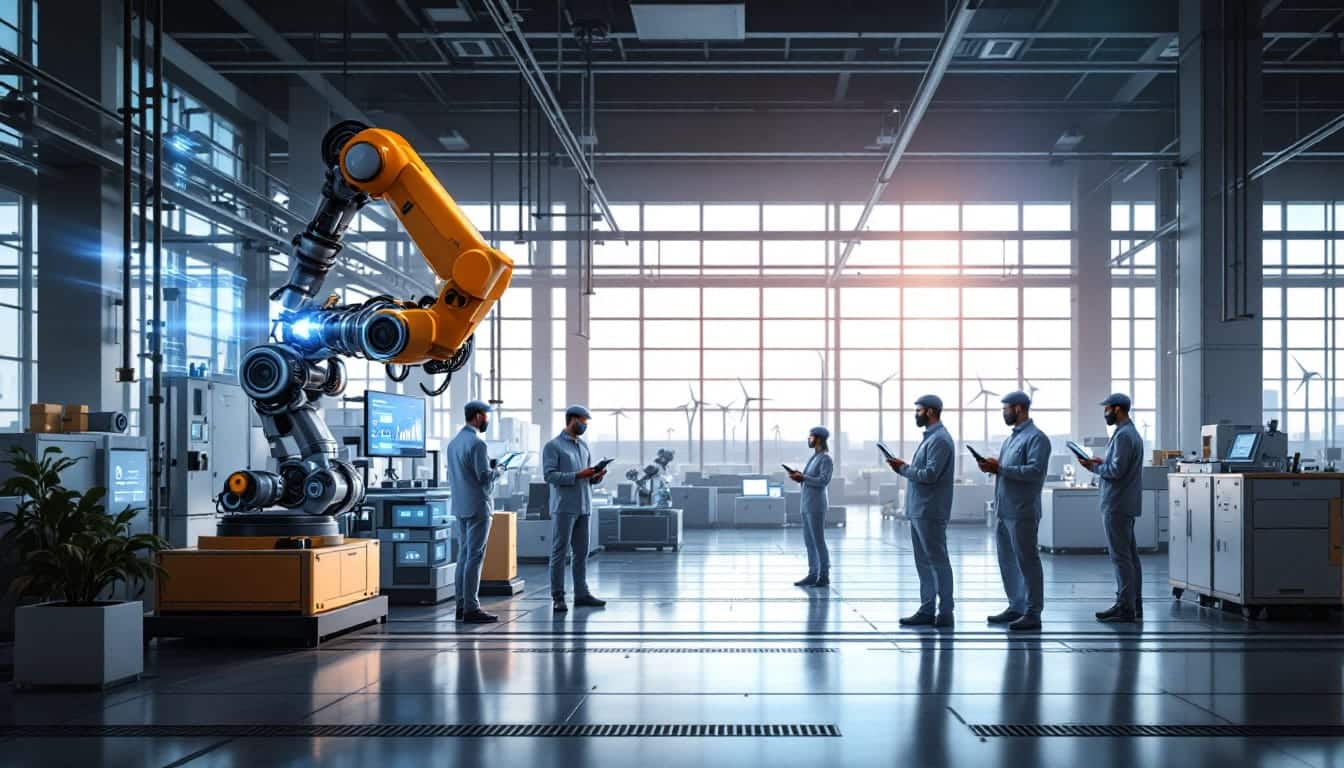In the era of Industry 4.0, the smart factory is redefining industrial production, integrating technological advancements such as AI, IoT, and cloud computing. This transformation offers a symbiosis between machines and systems, creating an innovative production environment where efficiency, flexibility, and responsiveness reach new heights.
Table des matières
ToggleGlossary of the Smart Factory: The Revolution of Industrial Production
Smart Factory : At the heart of Industry 4.0, the smart factory connects digital technologies to production processes, allowing for better flexibility, efficiency, and responsiveness. This model redefines the interaction between man and machine, optimizing industrial operations.
Industry 4.0 : This fourth industrial revolution marks a major digital transformation. Initiated in Germany in 2011, it integrates technologies such as the Internet of Things (IoT), artificial intelligence, and data analytics, making manufacturing more interconnected and adaptable.
Internet of Things (IoT) : Rooted in the concept of interconnection, IoT creates networks of devices and equipment that exchange data in real-time, facilitating smooth communication between the various elements of a factory.
Artificial Intelligence (AI) : AI plays a crucial role in smart factories by facilitating predictive analytics and real-time process optimization, thus enhancing performance and enabling informed decision-making.
Data Analytics : At the center of a smart factory’s efficiency, data analytics converts vast sets of information into actionable insights, helping to identify optimization opportunities and continuously improve processes.
Cloud Computing : By providing an adaptable and scalable infrastructure, cloud computing stores and processes data remotely, supporting the complex analyses needed for the operation of smart factories.
Fusion of IT and OT Technologies : This integration is fundamental for smart factories, combining communications control (IT) with operations management (OT) for optimal use of real-time data.
Custom Production : Through digitalization, the smart factory offers unprecedented flexibility, allowing product customization according to specific customer demands without sacrificing efficiency.
Predictive Maintenance : By real-time analyzing data from equipment, the smart factory anticipates potential failures, reducing costs and interruptions through proactive maintenance.
Supply Chain Optimization : By integrating planning, logistics, and scheduling with advanced technologies, the smart factory synchronizes demand, production, and delivery, minimizing costs and improving timelines.
Agile Production : The flexibility of the smart factory allows it to quickly adapt to market fluctuations, making operations more agile and responsive to changes in demand.
Interoperability : In a connected production context, interoperability ensures that different systems and devices communicate effectively, a crucial aspect for the smooth operation of the smart factory.
To further explore the understanding and applications of smart factories, check out the following links: articles on the transition to Industry 5.0, analysis of the obstacles of smart factories, and innovations in intelligent manufacturing.

“`html
FAQ: Smart Factory: The Revolution of Industrial Production
A : The smart factory is at the heart of the fourth industrial revolution, integrating advanced digital technologies into production to create flexible, efficient, and responsive manufacturing systems. It redefines how industrial operations are conducted, promoting advanced collaboration between man and machine.
A : The key technologies of a smart factory include Artificial Intelligence (AI) for analysis and optimization, the Internet of Things (IoT) for connectivity, data analytics for informed actions, and cloud computing for data storage and processing.
A : A smart factory integrates a symbiosis of IT and OT technologies, ensuring smooth communication and coordination between systems and equipment. This allows for self-regulation and continuous optimization of production.
A : Advantages include improved efficiency and productivity, reduced operational costs, and increased flexibility to customize production according to market needs. This enhances the competitiveness of the company and its responsiveness to changes.
A : Challenges include data security, the need for specialized skills, investments in new equipment and infrastructure, integration of heterogeneous systems, and regulation of data protection standards.





